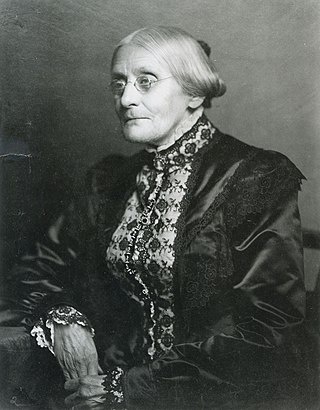
Susan B. Anthony was an American social reformer and women's rights activist who played a pivotal role in the women's suffrage movement. Born into a Quaker family committed to social equality, she collected anti-slavery petitions at the age of 17. In 1856, she became the New York state agent for the American Anti-Slavery Society.

The Declaration of Sentiments, also known as the Declaration of Rights and Sentiments, is a document signed in 1848 by 68 women and 32 men—100 out of some 300 attendees at the first women's rights convention to be organized by women. Held in Seneca Falls, New York, the convention is now known as the Seneca Falls Convention. The principal author of the Declaration was Elizabeth Cady Stanton, who modeled it upon the United States Declaration of Independence. She was a key organizer of the convention along with Lucretia Coffin Mott, and Martha Coffin Wright.
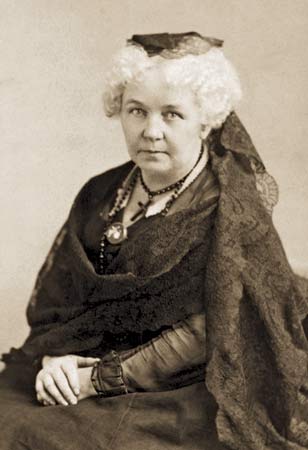
Elizabeth Cady Stanton was an American writer and activist who was a leader of the women's rights movement in the U.S. during the mid- to late-19th century. She was the main force behind the 1848 Seneca Falls Convention, the first convention to be called for the sole purpose of discussing women's rights, and was the primary author of its Declaration of Sentiments. Her demand for women's right to vote generated a controversy at the convention but quickly became a central tenet of the women's movement. She was also active in other social reform activities, especially abolitionism.

The Seneca Falls Convention was the first women's rights convention. It advertised itself as "a convention to discuss the social, civil, and religious condition and rights of woman". Held in the Wesleyan Chapel of the town of Seneca Falls, New York, it spanned two days over July 19–20, 1848. Attracting widespread attention, it was soon followed by other women's rights conventions, including the Rochester Women's Rights Convention in Rochester, New York, two weeks later. In 1850 the first in a series of annual National Women's Rights Conventions met in Worcester, Massachusetts.
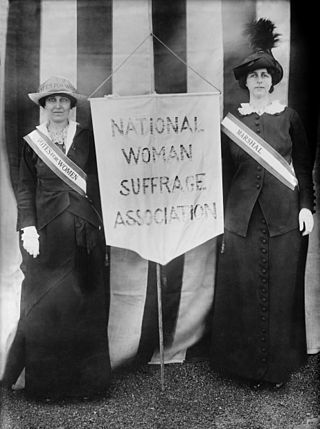
The National Woman Suffrage Association (NWSA) was formed on May 15, 1869, to work for women's suffrage in the United States. Its main leaders were Susan B. Anthony and Elizabeth Cady Stanton. It was created after the women's rights movement split over the proposed Fifteenth Amendment to the U. S. Constitution, which would in effect extend voting rights to black men. One wing of the movement supported the amendment while the other, the wing that formed the NWSA, opposed it, insisting that voting rights be extended to all women and all African Americans at the same time.

Seneca Falls is a hamlet and census-designated place in Seneca County, New York, United States. The population was 6,681 at the 2010 census. The 2020 census population of Seneca Falls CDP was 6,809. The hamlet is in the Town of Seneca Falls, east of Geneva. It was an incorporated village from 1831 to 2011.

The First Unitarian Church of Rochester is located at 220 Winton Road South in Rochester, New York, U.S. The congregation is one of the largest in its denomination, the Unitarian Universalist Association. The non-creedal church conducts programs in the areas of spirituality, social concerns, music, and arts. This church is one of two Unitarian Universalist congregations in Monroe County, the other being First Universalist Church of Rochester.

Martha Coffin Wright was an American feminist, abolitionist, and signatory of the Declaration of Sentiments who was a close friend and supporter of Harriet Tubman.

Amy Kirby Post was an activist who was central to several important social causes of the 19th century, including the abolition of slavery and women's rights. Post's upbringing in Quakerism shaped her beliefs in equality of all humans, although she ultimately left the Religious Society of Friends because of her desire to actively support social change efforts that called upon her to collaborate with non-Quakers. A friend of many prominent activists including Frederick Douglass and Susan B. Anthony, Post provided key support to the causes that she believed in both publicly and in less-public ways. She was a signer of the 1848 Declaration of Sentiments and a life-long activist who committed herself to work toward a range of intersecting social issues. This blended activism approach sets Post apart from many other activists of her time who advocated for a single issue in the hopes that doing so would lead to sufficient social change.
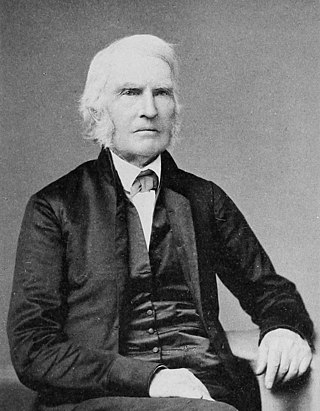
James Mott was a Quaker leader, teacher, merchant, and anti-slavery activist. He was married to suffragist leader Lucretia Mott. Like her, he wanted enslaved people to be freed. He helped found anti-slavery organizations, participated in the "free-produce movement", and operated an Underground Railroad depot with their family. The Motts concealed Henry "Box" Brown after he had been shipped from Richmond, Virginia in a crate. Mott also supported women's rights, chairing the Seneca Falls Convention in 1848. He spent four years supporting the establishment of Swarthmore College.

Thomas M'Clintock was an American pharmacist and a leading Quaker organizer for many reforms, including abolishing slavery, achieving women's rights, and modernizing Quakerism.
The National Women's Rights Convention was an annual series of meetings that increased the visibility of the early women's rights movement in the United States. First held in 1850 in Worcester, Massachusetts, the National Women's Rights Convention combined both female and male leadership and attracted a wide base of support including temperance advocates and abolitionists. Speeches were given on the subjects of equal wages, expanded education and career opportunities, women's property rights, marriage reform, and temperance. Chief among the concerns discussed at the convention was the passage of laws that would give women the right to vote.

Abigail Norton Bush was an abolitionist and women's rights activist in Rochester, New York. She served as president of the Rochester Women's Rights Convention, which was held in 1848 immediately after the first women's rights convention, the Seneca Falls Convention. By doing so, Bush became the first woman to preside over a public meeting composed of both men and women in the U.S.

Lucretia Mott was an American Quaker, abolitionist, women's rights activist, and social reformer. She had formed the idea of reforming the position of women in society when she was amongst the women excluded from the World Anti-Slavery Convention held in London in 1840. In 1848, she was invited by Jane Hunt to a meeting that led to the first public gathering about women's rights, the Seneca Falls Convention, during which the Declaration of Sentiments was written.

The American Equal Rights Association (AERA) was formed in 1866 in the United States. According to its constitution, its purpose was "to secure Equal Rights to all American citizens, especially the right of suffrage, irrespective of race, color or sex." Some of the more prominent reform activists of that time were members, including women and men, blacks and whites.

Mary Stafford Anthony was an American suffragist during the women's rights movement of the 19th century. Anthony was employed as a school teacher in Western New York, and was eventually promoted to the position of principal within the Rochester City School District, where she was the first woman known to receive equal pay with men in the same job.
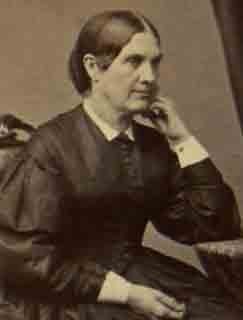
Jane Clothier Hunt or Jane Clothier Master was an American Quaker who hosted the Seneca Falls meeting of Lucretia Mott and Elizabeth Cady Stanton.
The Ohio Women's Convention at Salem in 1850 met on April 19–20, 1850 in Salem, Ohio, a center for reform activity. It was the third in a series of women's rights conventions that began with the Seneca Falls Convention of 1848. It was the first of these conventions to be organized on a statewide basis. About five hundred people attended. All of the convention's officers were women. Men were not allowed to vote, sit on the platform or speak during the convention. The convention sent a memorial to the convention that was preparing a new Ohio state constitution, asking it to provide for women's right to vote.
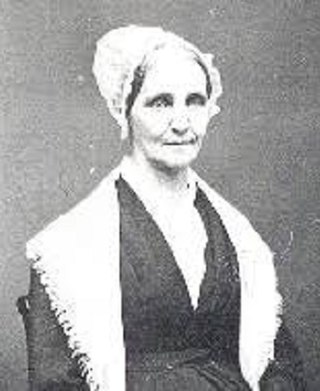
Mary Ann M'Clintock or Mary Ann McClintock (1800–1884) is best known for her role in the formation of the women's suffrage movement, as well as abolitionism.
The Progressive Friends, also known as the Congregational Friends and the Friends of Human Progress, was a loose-knit group of dissidents who left the Hicksite branch of the Society of Friends (Quakers) in the mid-nineteenth century. The separation was caused by the determination of some Quakers to participate in the social reform movements of the day despite efforts by leading Quaker bodies to dissuade them from mixing with non-Quakers. These reformers were drawn especially to organizations that opposed slavery, but also to those that campaigned for women's rights. The new organizations were structured according to congregationalist polity, a type of organization that gives a large degree of autonomy to local congregations. They were organized on a local and regional basis without the presence of a national organization. They did not see themselves as creators of a new religious sect but of a reform movement that was open to people of all religious beliefs.

















